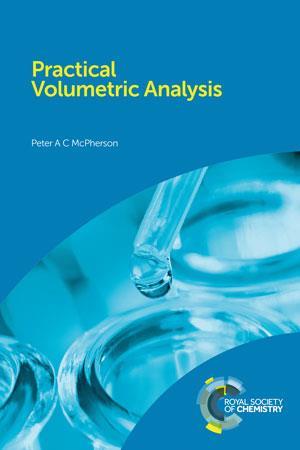Adrian Dingle reviews this new volumetric book.
Practical volumetric analysis
Peter McPherson
Royal Society of Chemistry
2014 | 332 | £24.99 (PB)
ISBN 9781849739146

I love a good volumetric book, and here’s a new volume that has a stated aim of merging the traditional with the contemporary.
If I’m honest, chapters 1–3 of Peter’s text confuse me a little. They cover content that, given the book’s title, I wasn’t expecting. I doubt that the intended audience will find much in chapters 1 and 2 (Foundations of chemistry and Stoichiometry) that they don’t already know, and while chapter 3 (Statistical concepts) certainly makes contextual sense, I wonder if it might have been better delivered as an appendix.
Early surprises aside, the next five chapters hit the volumetric nail squarely on the head. I like the foundation laid in chapter 4 (Basics of volumetric analysis), which gives an introduction to glassware, primary standards and a few example calculations. These staples will prove helpful to readers that need to cross-reference the specifics that follow, with some fundamental principles.
Those essentials are followed by the meat of the book, with acid–base, redox, precipitation and complexometric titrimetry all addressed. Each chapter follows a pattern of extensive background knowledge, several practical procedures and finally some suggested investigations aimed at embracing the project based learning model.
Some slightly more esoteric aspects conclude things, with chapters on advanced titrimetry (including electrical-based titrations), mathematics of titrimetry, volumetric analysis in industry, and further statistical concepts. All take the reader to places that are quite likely to be beyond their needs, but I prefer to interpret these additions as thorough rather than distracting, since one can still pick and choose content as necessary. All chapters are bookended by, at the front, a list of aims, and at the back, some end of chapter questions – again, comprehensive and consistent.
Absolutely everything that an advanced secondary school student would need is here, with a lot more besides. In fact, it’s difficult to foresee a situation even at the undergraduate level that this book wouldn’t easily address. If one were to read this cover-to-cover and complete all of the suggested laboratory work, one would have a comprehensive grounding in volumetric analysis by almost any measure.
Purchase Practical volumetric analysisfrom the Royal Society of Chemistry website: RSC members receive a 35% discount.









No comments yet